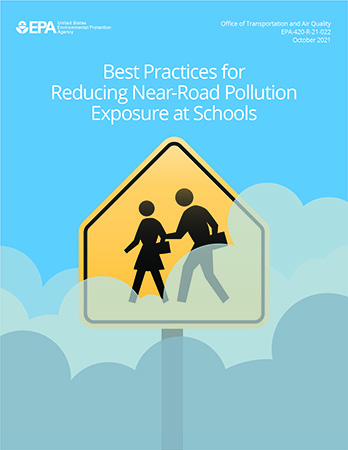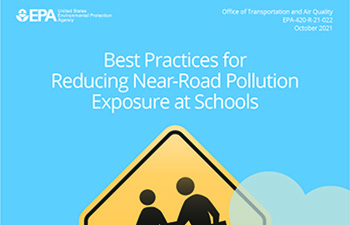Sonoma Technology and EPA Help Schools Reduce Exposure to Traffic-Related Air Pollution
Clients
U.S. Environmental Protection Agency (EPA)
Nearly 17,000 schools in the United States are located fewer than 1,000 feet from heavily used roads, exposing children to traffic-related air pollutants that are linked to a variety of short- and long-term health effects. Sonoma Technology and our study partner, Arup, worked with the U.S. EPA to develop the <a href="https://nepis.epa.gov/Exe/ZyPDF.cgi?Dockey=P1013GDE.pdf" target="_blank"><i>Best Practices for Reducing Near-Road Air Pollution Exposure at Schools</i> guidebook</a href>. EPA published the first version of the guidebook in 2015 and our updated version in 2021. The 2021 guidebook includes new sections such as air quality monitoring with lower-cost sensors. The publication offers schools strategies to reduce student exposure to traffic-related air pollution.</p>
Strategies identified in the publication are rooted in practical experience and have already been successfully implemented in schools and communities across the country. Best practices covered include:</p>
<ul><li>Mechanical ventilation and filtration</li>
<li>Passive and natural ventilation</li>
<li>Actions that building occupants can take</li>
<li>School site location and design</li>
<li>Transportation management policies</li>
<li>Roadside barriers</li></ul></p>
The guidebook also provides a mechanical ventilation and filtration system assessment checklist to help schools improve classroom air quality.</p>
As part of our work, we conducted literature reviews on near-road health concerns, mitigation strategies, and best practices for reducing exposure. In addition, we assessed analysis tools to support near-road/smart growth planning and developed case study material illustrating near-road planning principles to reduce pollutant exposure. Final products, all available from <a href="https://www.epa.gov/mobile-source-pollution/how-mobile-source-pollution-affects-your-health/" target="_blank">EPA’s website</a href>, include the guidebook, case studies, a summary infographic, and a list of additional resources to help school officials.
Strategies identified in the publication are rooted in practical experience and have already been successfully implemented in schools and communities across the country. Best practices covered include:</p>
<ul><li>Mechanical ventilation and filtration</li>
<li>Passive and natural ventilation</li>
<li>Actions that building occupants can take</li>
<li>School site location and design</li>
<li>Transportation management policies</li>
<li>Roadside barriers</li></ul></p>
The guidebook also provides a mechanical ventilation and filtration system assessment checklist to help schools improve classroom air quality.</p>
As part of our work, we conducted literature reviews on near-road health concerns, mitigation strategies, and best practices for reducing exposure. In addition, we assessed analysis tools to support near-road/smart growth planning and developed case study material illustrating near-road planning principles to reduce pollutant exposure. Final products, all available from <a href="https://www.epa.gov/mobile-source-pollution/how-mobile-source-pollution-affects-your-health/" target="_blank">EPA’s website</a href>, include the guidebook, case studies, a summary infographic, and a list of additional resources to help school officials.
Air Quality
Climate
Emissions
Environmental Justice
Exposure
Health
Measurements
Modeling
Policy and Planning
Public Outreach
Transportation


Olivia S. Ryder

Olivia
S.
Ryder
Senior Atmospheric Data Scientist / Kids Making Sense Product Manager
oryder@sonomatech.com
/sites/default/files/2025-04/OSRres.pdf
